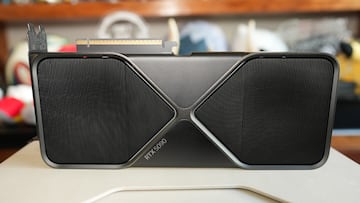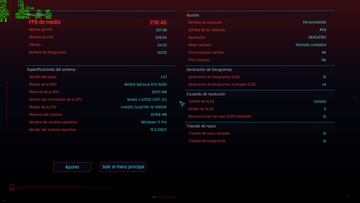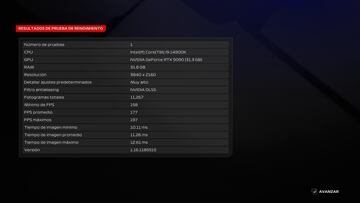Nvidia
GeForce RTX 5090, a review of a graphics card that represents a revolution in graphics performance
4K visuals will know no limits with DLSS 4 and Artificial Intelligence.

NVIDIA surprised everyone at CES 2025 with the unveiling of the GeForce RTX 50-series lineup, which once again pushes the boundaries of gaming graphics. The lineup is led by the impressive GeForce RTX 5090, a graphics card that not only delivers a significant boost in raw performance but also features DLSS 4, a new patent that multiplies graphics performance through AI-driven frame generation.
Since we feel that this new GPU represents a significant generational change, we decided to list all the changes first, before moving on to the hard data from the tests.
DLSS 4
One of the flagship features of the 5000 Series is Multi-Frame Generation. This technology harnesses the power of 5th-generation tensor cores and a new AI model to generate most of the pixels on the screen, rather than rendering them directly. The result is up to 8x performance improvement over traditional rendering and up to 1.7x improvement over the previous DLSS 3 frame generation.
DLSS 4 works by combining motion information, depth, and an optical flow field to create additional frames. Thanks to optimizations in the AI model and the addition of hardware flip metering, multi-frame generation is now significantly incremental, delivering smooth images with low latency.
Transformer Model
DLSS 4 also introduces a Transformer model architecture to improve image quality in Ray Reconstruction, Super Resolution and DLAA. It analyzes the relative importance of each pixel throughout the image and across multiple frames, resulting in greater stability, less ghosting, and sharper details in motion.
Gaming, Applications and Overrides
The launch of the RTX 5090 comes with extensive support for DLSS 4. More than 75 games and applications will support Multi Frame Generation from day one, and the DLSS Override feature in the NVIDIA App allows users to enable the new DLSS features in titles that have not yet been updated.
Reflex 2, RTX Neural Rendering and Neural Shaders
In addition to DLSS 4, the RTX 5090 introduces NVIDIA Reflex 2 to further reduce latency in competitive gaming, the RTX Neural Rendering Toolkit to accelerate path tracing, and RTX Neural Shaders for a new era of graphics innovation.
GeForce RTX 5090 Specifications
- CUDA Cores: 21,760
- Tensor Cores: 5th Generation of 3,352 AI TOPS
- Ray Tracing Cores: 4th Generation, 318 TFLOPS
- Boost Clock: 2.41 GHz
- Memory: 32 GB GDDR7
- Memory Bus: 512-bit
- Architecture: Blackwell
- Display Support: 4K at 480 Hz or 8K at 120 Hz with DSC
Computer characteristics with which we tested the GeForce RTX 5090
- CPU: Intel Core i9-14900K
- RAM: 32 GB Kingston Fury DDR5 at 5600 Mhz
- Motherboard: Z790 AORUS Elite AX
- Cooling System: Aorus Waterforce X240
- GPU: NVIDIA GeForce RTX 4090
- SSD: Kingston Fury Renegade PCIe 4.0 NVMe M.2
Design
One of the first things that stands out is that this GPU has a smaller size than the GeForce RTX 4090 (2 slots), has a reduced industrial look that facilitates installation, although it is important to note that its power consumption is 575W, so it is advisable to have a power supply of at least 1000W. If you do not have a power supply with at least 600W PCIe Gen 5 connector, it integrates a very well designed 4x PCIe 8-pin adapter.
Methodology
For this analysis we ran all titles in 4K with all values at maximum with and without DLSS. If the game had the ability to run DLSS x4, we also tested it, as well as the Transformer model, and if it had raytracing, we also enabled it.
When using DLSS, regardless of the version, we used the quality mode and if the game had NVIDIA DLSS Frame Generation and NVIDIA Reflex, we also enabled it, the idea was just to see how far the FPS could go. If the game has blocked frames, it will be indicated.
The 27 titles were played for at least 30 minutes, sampling in the most complex parts and even trying to have the same conditions of the test we did on the GeForce RTX 4090.
Video games with their own benchmark
Assassin’s Creed Mirage: 143 FPS

Cyberpunk 2077 gave us a maximum of 218 FPS with DLSS X4 using the Convolutional Neural Network although with the transformer model it gave us up to 211 FPS.

F1 24: 177 FPS

FarCry 6: 130 FPS

Red Dead Redemption 2: 130 FPS

Titles without own benchmark
- Alan Wake 2: 79 FPS
- Apex Legends: 142 FPS
- Control: 116 FPS
- Dead Space: 188 FPS
- Death Stranding: 120 FPS (blocked)
- Dragon Age The Veilguard: 135 FPS
- Final Fantasy VII Remake: 118 FPS
- Flight Simulator 2024: 75 FPS
- Fortnite: 58 FPS
- Ghost of Tsushima: 216 FPS
- Ghostrunner 2: 335 FPS
- God of War Ragnarök: 260 FPS
- GTA 5: 134 FPS
- Indiana Jones and the Great Circle: 131 FPS
- Metaphor: ReFantazio: 242 FPS
- Ninja Gaiden 2 Black: 119 FPS
- Ratchet & Clank: Rift Apart: 196 FPS
- Resident Evil 4: 146 FPS
- Resident Evil VII: 314 FPS
- Senua’s Saga: Hellblade II: 187
- Sonic X Shadow Generations: 120 FPS (blocked)
- Star Wars Jedi: Survivor: 170 FPS

Noise and temperature
What is very important to mention is that this GPU maintained an average of 161.6º F during testing and has significantly reduced noise, something that is evident in its design.
Points to consider
This GPU is currently the fastest on the market, with a performance increase between 20% and 40% compared to the GeForce RTX 4090, depending on the game, but it also depends on whether or not we use the new DLSS 4 technology with Multi Frame Generation, which significantly increases the frame rate by generating frames through AI, but also causes an increase in latency, not to mention that it also consumes much more power than its predecessor.
The GeForce RTX 5090 will be available on January 30th at a suggested retail price of $1,999.
Conclusion
NVIDIA has done an excellent job in redesigning its best card to reach a ridiculous size for the performance level, literally few video games gave us less than 60 FPS and the vast majority gave us more than 100 FPS using the "normal" DLSS technologies. DLSS 4 is a blast, and the only thing it shows us is that there is now a lack of compatible monitors or TVs that allow us to take full advantage of this GPU. It is by far the best graphics card in the world to date and its new technologies open the door to a world of possibilities with AI frame generation.
Best
- Smaller and with a design that improves heat dissipation over the 4090.
- DLSS 4 takes us to unprecedented levels of 4K resolution.
- Significantly improved 4x PCIe 8-pin adapter.
Worst
- Consumption of 575W, which requires a power supply of at least 1000W.
- There are few displays or monitors that allow you to push it to the limit.
- Increased average temperature compared to the GeForce RTX 4090.
Score: 9.5
Follow MeriStation USA on X (formerly known as Twitter). Your video game and entertainment website for all the news, updates, and breaking news from the world of video games, movies, series, manga, and anime. Previews, reviews, interviews, trailers, gameplay, podcasts and more! Follow us now!


